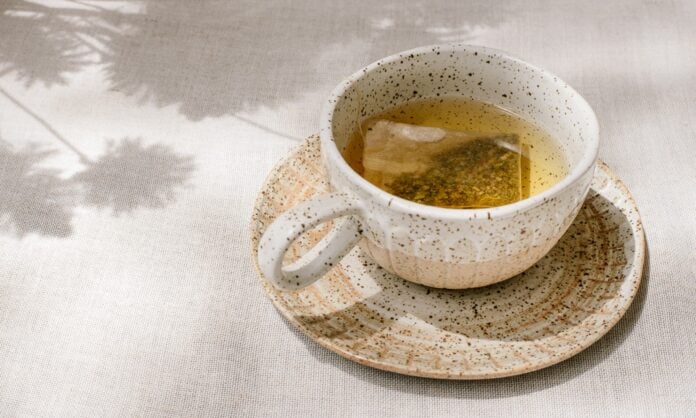Oolong tea is increasingly popular, especially in Asian countries like China, where it holds a rich history and is linked to various health advantages. Often referred to as “black dragon tea,” oolong sits in an interesting space, blending characteristics of both green and black teas. Let’s explore what oolong tea is, its benefits, and how to incorporate it into your routine.
What is Oolong Tea?
Oolong tea is a traditional Chinese tea made from partially oxidized tea leaves. Oxidation is a process where tea leaves are exposed to air, causing them to darken and develop complex flavors. Like green and black tea, oolong originates from the Camellia sinensis plant. The process involves plucking leaves, withering them in the sun, crushing, and allowing them to oxidize before drying.
Oolong tea occupies a middle ground – less oxidized than black tea and more than green tea – resulting in a taste profile somewhere between the two. Different types of oolong exist, each boasting a unique flavor. According to So-Han Fan, tea importer and founder of West China Tea, “Oolong is a cultivar-specific style of tea, whereby individual cultivars have been selected for, and the different varietals produced from these cultivars are oxidized to different degrees.” Less oxidized oolongs have lighter flavors, while more oxidized varieties offer a full-bodied, richer taste.
A serving of oolong tea (approximately 8 ounces) provides around 38.4 milligrams of caffeine, slightly less than the 47.4 milligrams found in black tea. While oolong tea is gaining traction in the West, it’s not as readily available as other teas, but you can find it at specialty tea shops and online retailers.
Nutritional Value
A cup of oolong tea is low in calories but provides some valuable nutrients. Here’s a breakdown:
- Calories: Approximately 2
- Caffeine: 38.4 mg
- Antioxidants: Rich in polyphenols, including catechins and theaflavins
- Minerals: Contains small amounts of manganese, potassium, and fluoride
Potential Health Benefits
Research on oolong tea, especially in human populations, is still ongoing, but early studies suggest it could offer several health benefits:
- Heart Health: Studies indicate that regular consumption of oolong tea, alongside green and black varieties, may be linked to lower blood lipid levels and a reduced risk of dyslipidemia.
- Brain Health: Oolong tea may support cognitive function and potentially reduce the risk of depression. Studies show a link between tea consumption and a lower prevalence of depressive symptoms.
- Weight Management: Certain compounds in oolong tea might aid fat oxidation, regulate lipid metabolism, and influence the gut microbiota—all potentially supporting healthy weight.
- Oral Health: A study found that regular consumption of oolong tea was associated with a reduced risk of oral squamous cell carcinoma (OSCC), particularly with warm and concentrated tea consumed for an extended period.
- Antioxidant Power: Oolong tea is packed with antioxidants, which help protect your cells from damage caused by free radicals.
How to Add Oolong to Your Routine
Enjoying oolong tea is versatile. While it traditionally lends itself to a warm brew, it can be enjoyed in a variety of ways. Keep in mind that it contains caffeine, which could disrupt sleep for sensitive individuals.
Here are a few suggestions for incorporating oolong into your daily routine:
- Morning Energy Boost: Enjoy a cup in the morning to start your day with a natural energy lift.
- Iced Refreshment: Brew a pot and chill it for a refreshing iced tea. Add a squeeze of lemon for added flavor.
- Latte Alternative: Substitute espresso with oolong tea in your favorite latte recipe for a unique twist.
Brewing Oolong Tea
There are different ways to brew oolong tea. One traditional method is gung fu tea practice, which involves using small pots and cups to steep high doses of loose-leaf tea quickly. This creates a concentrated brew. However, a simple brewing method is also effective:
- Place 2 tablespoons of loose-leaf oolong tea into a teapot.
- Heat water to just below boiling.
- Pour 6 ounces of water over the leaves and steep for 1-5 minutes.
- Pour into cups and enjoy.
Tea bags are also available, providing a quick and convenient option.
Buying and Storage Tips
- Choose Organic: Whenever possible, opt for organic oolong tea to minimize exposure to synthetic pesticides.
- Loose Leaf vs. Bags: Both loose-leaf and bagged oolong tea have a long shelf life.
- Proper Storage: Store oolong tea in an airtight container in a cool, dry place to preserve its flavor and freshness. According to the USDA FoodKeeper app, loose-leaf tea can last up to two years and tea bags can last up to three years when stored properly.
Disclaimer: This article provides general information and should not be considered medical advice. Always consult with a healthcare professional for any health concerns.

































